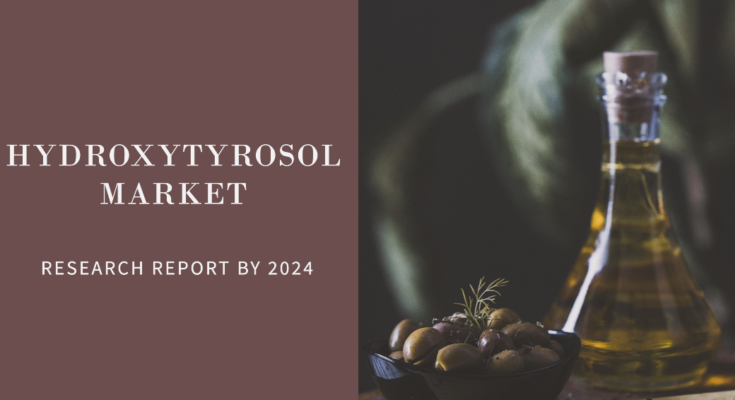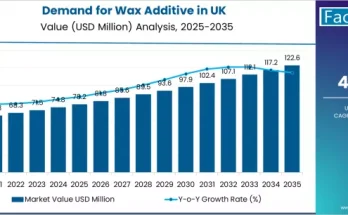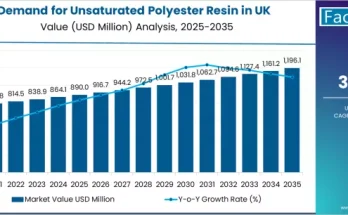The pursuit of health and wellness continues to drive innovation and demand across the nutraceutical, pharmaceutical, and cosmetic industries. Among natural compounds, hydroxytyrosol has emerged as a promising antioxidant, renowned for its powerful anti-inflammatory, anti-carcinogenic, and cardioprotective properties. Extracted primarily from olive leaves and olive oil by-products, hydroxytyrosol is now making headlines for its versatility and efficacy in numerous applications.
As consumer awareness grows around natural health boosters and clean-label ingredients, the hydroxytyrosol market is experiencing accelerated interest from both manufacturers and consumers. The market is forecasted to see a robust rise over the next decade, reflecting the compound’s diverse use in food, medicine, personal care, and more.
Market Overview:
Hydroxytyrosol is a phenolic compound categorized under polyphenols, known for its high antioxidant activity—more potent than vitamin C or E. This biochemical attribute positions it as a preferred ingredient in a wide array of formulations aimed at promoting cellular protection, aging management, and disease prevention.
The market’s growth trajectory is underpinned by multiple trends: the rise of functional foods, increasing demand for plant-based pharmaceuticals, and the clean beauty revolution. Hydroxytyrosol fits squarely at the intersection of these demands due to its natural origin, safety profile, and scientifically supported health benefits.
In addition, the compound’s approval by food safety authorities in various regions has reinforced its credibility and adoption in consumer products.
Regional Insights:
North America:
The North American region is one of the early adopters of hydroxytyrosol-infused products, particularly in the nutraceutical and skincare segments. Consumers in the U.S. and Canada are increasingly leaning toward natural wellness solutions, and hydroxytyrosol has garnered attention for its anti-aging and cardiovascular support claims. Strong investments in clinical research and innovation from biotech and supplement companies further strengthen the regional market.
Europe:
Europe remains a core production hub, given the widespread cultivation of olives across Mediterranean countries such as Spain, Italy, and Greece. Additionally, the European Food Safety Authority (EFSA) has played a pivotal role in the market by authorizing health claims related to olive polyphenols, including hydroxytyrosol. Regulatory support, coupled with consumer trust in botanical extracts, makes Europe a highly mature and innovation-driven market.
Asia-Pacific:
The Asia-Pacific region is emerging rapidly, driven by increasing health consciousness, expanding middle-class populations, and growing demand for anti-aging solutions. In countries like China, Japan, and South Korea, hydroxytyrosol is gaining popularity in cosmeceuticals and herbal medicine formulations. As governments in the region support traditional medicine modernization, hydroxytyrosol is expected to be a key component in many formulations.
Latin America and MEA:
These regions are slowly entering the hydroxytyrosol value chain, with rising demand seen in the pharmaceutical and personal care sectors. Local players are beginning to explore olive farming and polyphenol extraction technologies to capitalize on the global trend toward natural antioxidants.
Key Trends & Forecast:
- Rising Demand for Clean-Label Ingredients
Consumer scrutiny of product labels has intensified, prompting companies to replace synthetic ingredients with natural alternatives. Hydroxytyrosol, with its recognized antioxidant efficacy and olive-derived origin, is becoming a preferred choice in this transition.
- Expansion of Functional Foods and Beverages
The inclusion of hydroxytyrosol in dietary supplements and fortified foods is on the rise, especially among aging populations and fitness-conscious consumers. It is often incorporated in capsule form, energy drinks, or olive-based spreads aimed at improving heart health and immune function.
- Innovation in Extraction Techniques
Manufacturers are investing in green extraction methods, such as supercritical CO₂ and enzyme-assisted extraction, to obtain high-purity hydroxytyrosol. These techniques help maintain the compound’s bioactivity and make the product more appealing in pharmaceutical-grade applications.
- Integration into Skincare and Cosmetics
Thanks to its anti-aging and skin-repairing properties, hydroxytyrosol is becoming a prized component in serums, moisturizers, and sunscreens. Brands are marketing it as a “natural defense” against oxidative stress, pollution, and UV damage.
- Pharmaceutical Applications in the Spotlight
Ongoing clinical trials and research are exploring hydroxytyrosol’s role in preventing chronic illnesses such as diabetes, cancer, and neurodegenerative diseases. As evidence mounts, pharmaceutical applications are expected to emerge as a high-growth segment.
- Circular Economy and Sustainable Sourcing
As industries become more sustainability-focused, there is rising interest in valorizing olive waste. Hydroxytyrosol can be efficiently extracted from olive mill wastewater and pomace—offering both environmental and economic benefits.
Applications & End-Use Outlook:
- Nutraceuticals and Dietary Supplements
The supplement industry is a major end-user of hydroxytyrosol, capitalizing on its potent antioxidant properties. Common formats include capsules, powders, and tablets designed for cardiovascular, immune, and anti-inflammatory benefits.
- Functional Food and Beverages
Consumers are gravitating towards foods that offer more than just nutrition. Hydroxytyrosol is being infused into health drinks, olive oils, yogurts, and snack bars to enhance their functional value.
- Pharmaceuticals
Though still emerging, the use of hydroxytyrosol in pharmaceuticals is gaining traction, particularly for preventing oxidative damage, managing inflammation, and enhancing metabolic health.
- Cosmetics and Personal Care
Anti-aging skincare products infused with hydroxytyrosol are making their way into premium beauty shelves. The ingredient is being marketed for its ability to reduce wrinkles, boost collagen production, and protect against environmental stressors.
- Animal Nutrition
Hydroxytyrosol’s inclusion in animal feed and pet supplements is an underexplored yet growing segment. It is being studied for improving gut health, immunity, and meat quality in livestock.
Challenges to Market Expansion:
While the hydroxytyrosol market outlook is highly positive, it does face several challenges:
High production cost: Extraction and purification processes remain expensive, which can hinder mass adoption in cost-sensitive applications.
Regulatory variation: Despite approvals in some regions, global regulatory inconsistencies can slow market penetration.
Limited awareness: Outside niche health circles, general consumer awareness of hydroxytyrosol remains low. Education and branding will be key to unlocking mainstream demand.
Conclusion:
The hydroxytyrosol market represents a compelling intersection of health science, sustainability, and natural wellness. As consumers and industries alike pivot towards cleaner, safer, and more effective ingredients, hydroxytyrosol is set to emerge as a cornerstone compound in the formulation of next-generation nutraceuticals, pharmaceuticals, and cosmetics.
Its exceptional antioxidant potency, broad-spectrum applications, and compatibility with sustainable practices make it one of the most promising natural ingredients for the next decade. Companies that invest early in R&D, transparent sourcing, and consumer education will be well-positioned to lead in this evolving landscape.



